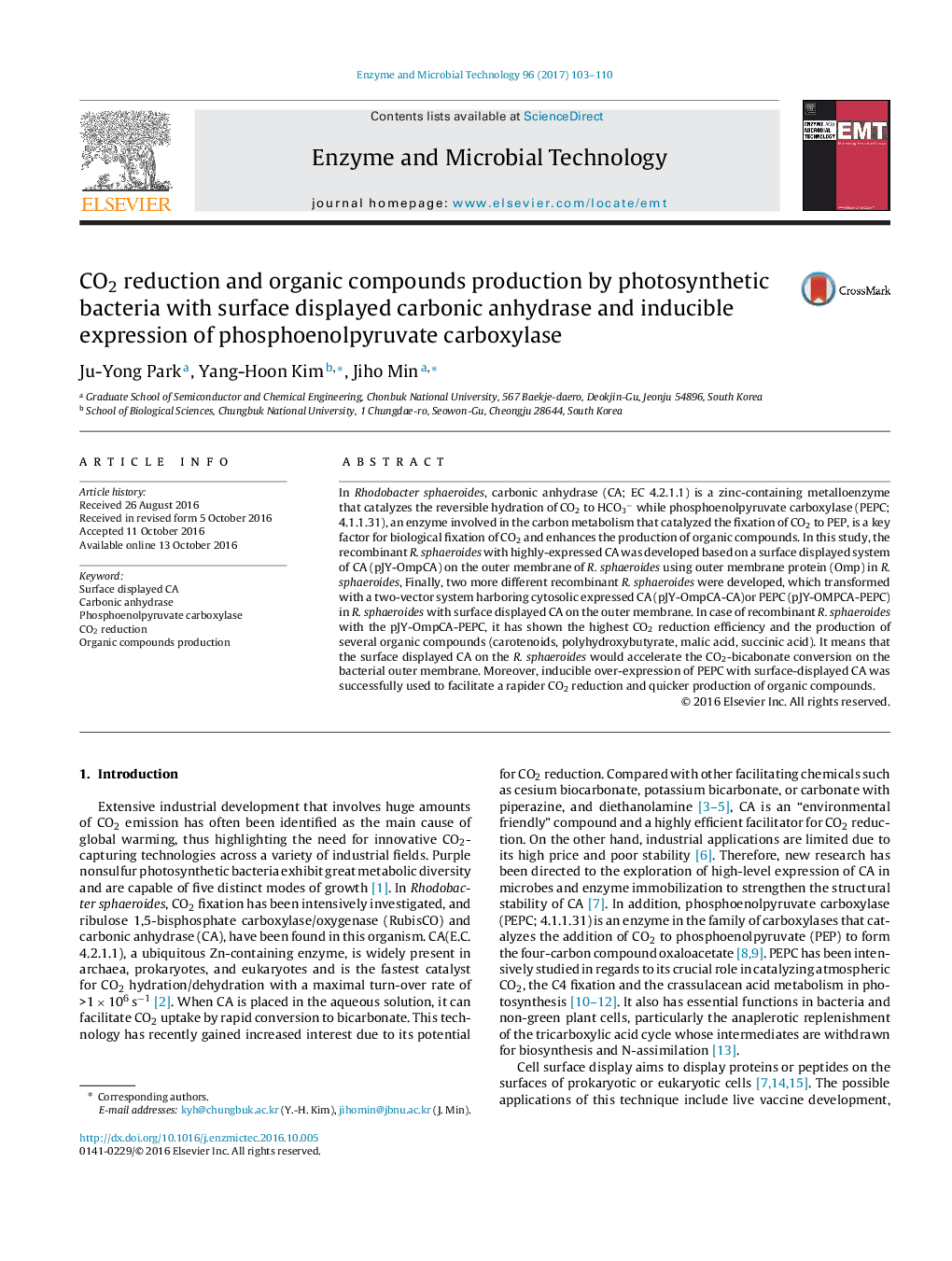| کد مقاله | کد نشریه | سال انتشار | مقاله انگلیسی | نسخه تمام متن |
|---|---|---|---|---|
| 4752863 | 1416375 | 2017 | 8 صفحه PDF | دانلود رایگان |

- Outer membrane protein can be used as an anchoring motif to display several type of CA with different sizes at the surface of R. sphaeroides.
- Inducible over-expression of CA and PEPC with surface displayed CA, two vectors systems, were developed.
- We have compared recombinant strains for the CO2 reduction and the production of the organic compounds.
- We have developed R. sphaeroides with enhanced photosynthetic activity through surface display of stable CA.
In Rhodobacter sphaeroides, carbonic anhydrase (CA; EC 4.2.1.1) is a zinc-containing metalloenzyme that catalyzes the reversible hydration of CO2 to HCO3â while phosphoenolpyruvate carboxylase (PEPC; 4.1.1.31), an enzyme involved in the carbon metabolism that catalyzed the fixation of CO2 to PEP, is a key factor for biological fixation of CO2 and enhances the production of organic compounds. In this study, the recombinant R. sphaeroides with highly-expressed CA was developed based on a surface displayed system of CA (pJY-OmpCA) on the outer membrane of R. sphaeroides using outer membrane protein (Omp) in R. sphaeroides, Finally, two more different recombinant R. sphaeroides were developed, which transformed with a two-vector system harboring cytosolic expressed CA (pJY-OmpCA-CA)or PEPC (pJY-OMPCA-PEPC) in R. sphaeroides with surface displayed CA on the outer membrane. In case of recombinant R. sphaeroides with the pJY-OmpCA-PEPC, it has shown the highest CO2 reduction efficiency and the production of several organic compounds (carotenoids, polyhydroxybutyrate, malic acid, succinic acid). It means that the surface displayed CA on the R. sphaeroides would accelerate the CO2-bicabonate conversion on the bacterial outer membrane. Moreover, inducible over-expression of PEPC with surface-displayed CA was successfully used to facilitate a rapider CO2 reduction and quicker production of organic compounds.
164
Journal: Enzyme and Microbial Technology - Volume 96, January 2017, Pages 103-110